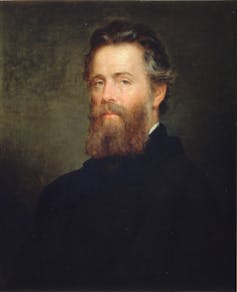Paolo Borsellino: the murder of an anti-mafia prosecutor and the enduring mystery of his missing red notebook
It has been 33 years since anti-mafia prosecutor Paolo Borsellino was blown up by Cosa Nostra in front of his mother’s home in Palermo, Sicily. His death on July 19 1992 came 57 days after the murder of his colleague, Giovanni Falcone. This was the peak of Cosa Nostra’s attack on state representatives.
A vital document was lost that day – a red notebook believed to have been in Borsellino’s work bag. This loss has hampered attempts to understand how deep into the Italian state Cosa Nostra’s activities run.
The early 1990s were a turbulent time in Italy. The fall of the Berlin wall in 1989 broke the Italian party system and wiped out the traditional political parties, which had been based around the opposing forces of the Christian Democrats (supported by the US and the Vatican) and the Communist party.
The Christian Democrats, in power during the post-war period, had often protected Cosa Nostra. But losing power meant an inability to honour its “pact” with mafiosi. This led to the mafia attacking anyone who got in its way.
Falcone and Borsellino, as anti-mafia prosecutors, had got under the skin of Cosa Nostra. Their work zoned in on its mentality and activities. They were the driving force behind the 1986 “maxi trial” that saw hundreds of mafiosi prosecuted. This was the first time important mafia bosses were imprisoned. Falcone and Borsellino had brought a new understanding to the internal workings of the mafia, including its links with politics and money laundering operations.
The mafia was deploying terrorist tactics against state representatives and institutions in the early 1990s in what appears to have been an attempt to get the state to negotiate with it. Borsellino, it is believed, was investigating this when he was murdered.
The red notebook
Crucially, on the day Borsellino was murdered, his work bag, which contained his red notebook (“l’agenda rossa”) disappeared from the wreckage of his car.
He carried his red notebook around with him everywhere, making copious notes of his investigations and ideas. Had it been recovered, l’agenda rossa could have revealed the possible links between state representatives (including with the police and judiciary), businessmen and Cosa Nostra.
It could, in effect, have mapped out how and to what extent Cosa Nostra had infiltrated the Italian state and the nature of its relationships with the new political class, the business elite, freemasons and other covert actors.
A photograph of a police officer walking off with what looks very much like the bag that presumably contained the notebook has circulated ever since. But this is where the trail ends. The bag – minus the notebook – was later found in the office of the head of the flying squad, with no explanation as to how and why it got there.
The disappearance of the red notebook remains a persistent enigma – and one which continues to haunt contemporary Italy because of what it might suggest about the nation’s underworld and political class.
This photo could even suggest that the goal of killing Borsellino was not just to eliminate a zealous public prosecutor but to remove a pantheon of knowledge about organised crime and its infiltration into the public realm as part of a more orchestrated plan.
Then, in 1993, Cosa Nostra suddenly and inexplicably ceased its terrorist tactics against the state. It was as though a truce had been reached. Could this be the case?
Many have speculated that there was a secret dialogue and a trattativa – a state-mafia negotiation entered and a deal struck between state representatives and Cosa Nostra leaders to stop the violence. In exchange for an end to the violence, it was suggested that state representatives promised softer anti-mafia laws. It’s possible that the disappearance of Borsellino’s red notebook could have been part of the deal.
Interpreting history
The history of these dynamics between state and the mafia has since been written and re-written, dividing Italians and mafia scholars.
At the heart of all these disagreements lie two questions: was the notebook taken intentionally and why did Cosa Nostra stop its attacks on the state at the specific moment that it did?. The answer to these would essentially establish whether or not there was a negotiated peace between the mafia and the state.
In 2014, high-profile politicians, police officers and mafiosi were put on trial, accused of playing a role and enabling these negotiations. This was, in effect, the Italian state putting itself on trial.
Some legal experts and historians have argued that the theory of coordinated action by state representatives and mafiosi was always an absurd hypothesis. While there might have been some random informal contacts, they contest that there was never a formal pact. The end of Cosa Nostra‘s violence, they argue, was due to a combination of other factors, including greater enforcement of the law.
Others argue that there is evidence of a pact. These include first-hand accounts from former criminals. But of course it is hard to make these stories stick because all evidence of a relationship of this kind would, by definition, be covert and off the books. As with many trials and in particular, mafia trials, there are no facts, just interpretations of facts.
In 2018, some state representatives and mafiosi were found guilty. But in 2023, the Italian supreme court overturned the 2018 ruling and concluded that there was no pact and no state-mafia negotiation.
All involved were cleared for different reasons as the court attempted to draw a line under the intrigue by articulating a clear position. But with the mafia, answers are rarely that simple. And history is not only written in the courtroom.
Borsellino’s legacy is celebrated in Italy to this day – but the unresolved matter of his missing notebook haunts the country more profoundly. His bag – minus the notebook – has recently been put on show at the Italian senate to celebrate his life. The display is also a reminder of how much remains unresolved from that period.
Felia Allum does not work for, consult, own shares in or receive funding from any company or organisation that would benefit from this article, and has disclosed no relevant affiliations beyond their academic appointment.


